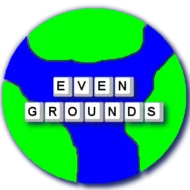Andrew Leland, a journalist, audio producer, editor and professor, in “The Country of the Blind” writes about how he gradually lost his vision due to retinitis pigmentosa. But this book is much more than his story. One can view it as a history book about blindness and blind people.
Andrew Leland takes the reader through how he practically lost his eye sight starting in fifth grade when he noticed that he didn’t see as well as his friends to today, when his field of vision is so narrow that he practically needs to do things the blind way. As he narrates his story, in each chapter he looks at different issues related to blindness and provides a very well-researched overview of all topics. After reading the book, I felt that I knew the facts, but now I understand the stories and the reasons behind them.
What makes his story unique is that he has authentic experience in different aspects of blindness, while he exactly understands what it means to see, he knows the struggle of losing one’s vision, how to relearn things as an adult to remain functional in life. Ultimately he learned to use the cane, the screen reader, and to read braille.
What I found most fascinating though is the number of issues he discusses, and all with brutal honesty. I generally have no problems discussing aspects of blindness, but there are things he put out in the open that I was too embarrassed to. For me the most touching in the book was when he talked about how he was afraid to cut the umbilical cord when his son was born. For a moment I felt a sense of relief that it wasn’t just me, but it didn’t last long, because eventually he cut it, but I didn’t. Twice.
As he tells his story, in each chapter he picks one aspect of blindness and gives a research based on extensive reading, and conversations with many people in the field.
He starts by describing the literature around the history of blindness, starting back in the Ancient Greece. Then continues to discuss the National Federation of the Blind (NFB), where he attended a convention, but also dives into the NFB’s history.
When he discusses how his relationship evolved with his wife as they together had to adjust to a constantly changing level of vision while raising their child, he gets into what descriptions of people mean, and how it relates to sexuality.
Continuing with description, he devotes a chapter to how audio description has evolved. An interesting observation he makes is that there are two approaches when it comes to expectations about good audio description. One is when people want to know even the smallest details, and the other is the practical where people want to know what’s absolutely necessary. Generally people had vision before are the ones who would want all the details. He also discusses how audio description has evolved from the 1970’s, and how it was eventually required by legislation.
But there is much more about legislation in the book, he writes about the civil rights movement, legislation around reasonable accommodation among many others, but fortunately it is not legal text, rather filled with stories about the people who worked on legislation or were part of different movements.
One of my favorite chapters was when he detailed all the inventions which we are using today, but were created for blind people originally. The type writer for example is one of the more commonly known ones, but you will have to read the book to figure out what else is on the list. You will be surprised.
At the end of the book, he describes his time at the Colorado Center for the Blind, where he spent two weeks with the students learning non-visual techniques to do everyday skills so they can independently function as blind people.
When I started reading the book, I had an electronic version, but when I was around half way, an audio book was posted on the National Library Service, read by the author himself. It was a special touch to hear the story narrated by Andrew Leland, though I have to admit I turned up the speed by 50 percent, it is just a habit I have when I read.
Though this book is only indirectly related to travel, I still wanted to bring it to my readers attention, because it is one of the best explanation I have read about what vision loss and blindness is. Though inferring from the book, Andrew travels extensively, for the most part he discusses cane travel which is interesting on its own.
I particularly recommend The Country of the Blind to those who want to know more about blind people, those who are currently in the process of losing their vision, and to blind people who want to understand how inventions and legislations evolved.
For eligible members, the book is available on Bookshare, NLS, or you can get it from Amazon, where I earn from qualifying purchases if you use the above links.


No comments! Be the first commenter?